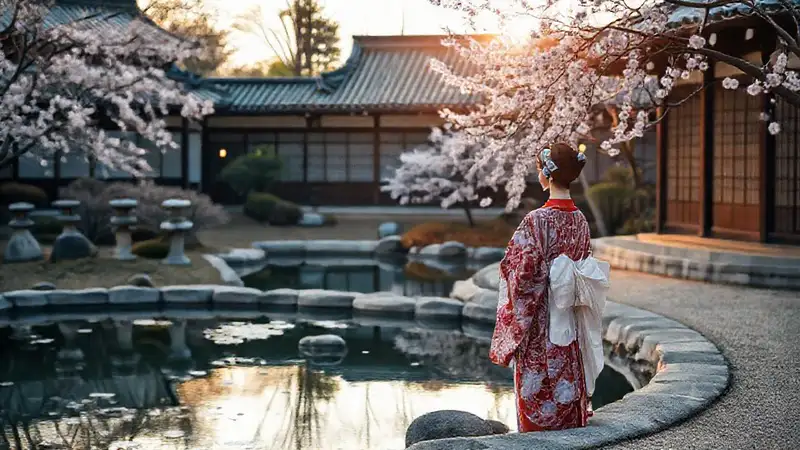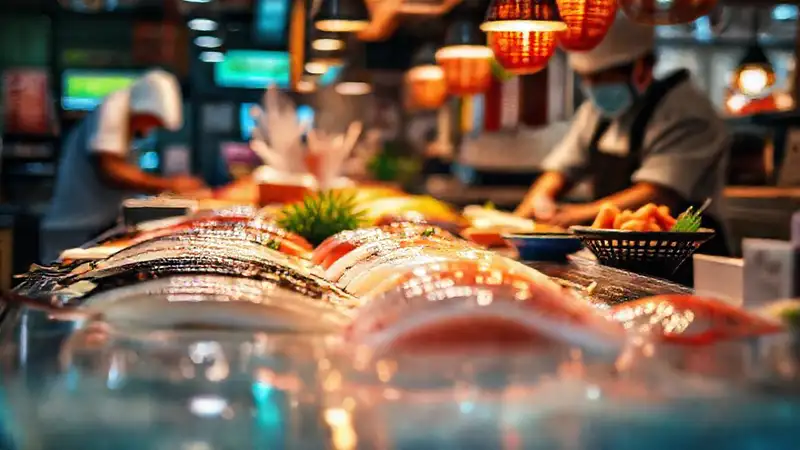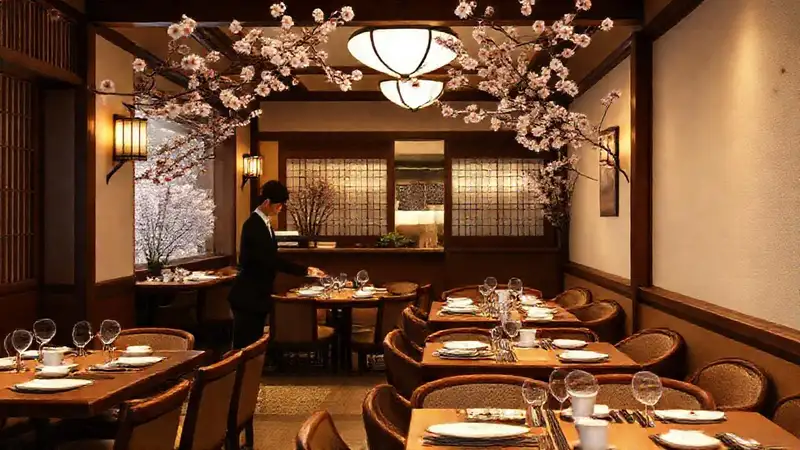Sushi, a cornerstone of Japanese cuisine, isn’t a monolithic experience. Across the country, distinct regional styles have emerged, each reflecting local ingredients, traditions, and even philosophies regarding presentation. These differences extend beyond simply the type of rice or fish used; they involve the entire dining experience, from the preparation to the serving and, crucially, the interaction between the chef and the diner. Understanding these regional nuances offers a richer appreciation of Japan’s culinary heritage. This article will explore three significant sushi styles – Hokkaido, Kansai, and Tokyo – and how their unique approaches shape the overall quality of service.
The evolution of sushi, from its humble beginnings as preserved fish to the elaborate art form it is today, is inextricably linked to regional variations. Each area developed unique techniques and preferences, profoundly influencing the overall character of the dining experience. These distinctions are not merely stylistic; they represent fundamental differences in the way food is valued, prepared, and shared. Ultimately, the study of regional sushi styles reveals a fascinating tapestry of cultural and culinary heritage.
Hokkaido Sushi: Freshness Above All
Hokkaido sushi is renowned for its incredibly fresh ingredients. Being a major fishing port, Hokkaido possesses unparalleled access to a vast array of seasonal seafood – particularly salmon, crab, and sea urchin – which are central to their style. Unlike some other regions where fish is often aged to enhance flavor, Hokkaido chefs prioritize immediate consumption, believing that the natural taste of the fish is the most important factor. This approach translates directly into the service. Because of the reliance on incredibly time-sensitive ingredients, you'll often find a brisk, efficient pace during a Hokkaido sushi meal.
The presentation in Hokkaido often emphasizes showcasing the quality of the ingredients. Dishes are typically served simply, allowing the freshness and flavor of the fish to take center stage. Instead of elaborate garnishes, there's a focus on the natural beauty of the seafood. Servers tend to be knowledgeable about the origin and seasonality of each piece, providing detailed explanations to the diner. This level of expertise is coupled with a restrained, almost understated, service style. The goal is to let the food speak for itself, and the server’s role is to facilitate that conversation.
Furthermore, Hokkaido sushi restaurants often have a strong sense of community. The emphasis is less on a formal, elaborate dining experience and more on shared enjoyment of exceptional seafood. You’ll notice a relaxed atmosphere and a tendency for diners to engage in conversation, creating a collaborative and convivial atmosphere. The service reflects this welcoming spirit, always aiming for hospitality and an effortless flow.
Kansai Sushi: Etiquette and Grace
Kansai (Osaka and Kyoto) sushi is famous for its unwavering commitment to etiquette and refined service. This tradition stems from a long history of samurai culture and the importance of demonstrating respect in all aspects of life. The entire dining experience is meticulously choreographed, with every gesture and interaction designed to create a harmonious and dignified atmosphere. From the moment you arrive, you'll be guided through a series of bows and courtesies.
Kansai sushi chefs take immense pride in their craft, and their service reflects this dedication. Servers are highly trained to anticipate the diner’s needs, offering a seemingly endless supply of hot water, sake, and small appetizers to complement the sushi. The pace of the meal is deliberately slow, encouraging diners to savor each piece and engage in mindful appreciation. It’s considered incredibly rude to rush or to make excessive noise. The entire ritual is designed to elevate the dining experience beyond mere sustenance.
The emphasis on aesthetics extends to the presentation of the sushi itself. Each piece is carefully crafted and arranged on the plate, taking into account color, texture, and balance. Servers will meticulously explain the history and origin of each ingredient, further enhancing the dining experience. This level of attentiveness and thoughtful presentation demonstrates a deep respect for both the food and the customer, resulting in incredibly attentive service.
Tokyo Sushi: Precision and Tradition

Tokyo sushi, particularly in the Ginza district, embodies precision and a deep reverence for tradition. Edo-style sushi, developed in Edo (now Tokyo), is characterized by its minimalist presentation and focus on the inherent quality of the fish. Chefs undergo years of rigorous training to master the techniques of nigiri and makizushi, and their service reflects this dedication.
Tokyo sushi restaurants often have a single chef – the itamae – who oversees every aspect of the meal. The itamae’s movements are deliberate and controlled, reflecting a profound understanding of the ingredients and the techniques involved. Service is often quiet and understated, focusing on providing the diner with the space to fully appreciate the sushi. The mastery of the craft is paramount.
Furthermore, Tokyo sushi focuses heavily on the perceived "feel" of the fish. The itamae will often describe the texture, temperature, and aroma of the sushi, inviting the diner to engage with the sensory experience. While polite, the service isn't overly effusive; it’s a subtle, respectful presence designed to enhance the diner's appreciation for the sushi's inherent qualities. A key element is the tight control of the temperature, constantly adjusting to ensure the perfect bite.
The Regional Impact on Service Styles
The divergent approaches to sushi across Hokkaido, Kansai, and Tokyo directly shape the service styles you’ll encounter. Hokkaido prioritizes efficiency and celebrating freshness with a relaxed atmosphere. Kansai emphasizes formality, ritual, and meticulous attention to detail and etiquette. Tokyo reflects the precision and reverence for tradition that defines its culinary heritage. These differences aren't simply aesthetic; they’re deeply ingrained in the cultural values of each region and significantly influence the interactions between chefs and diners. Understanding this regional variation is crucial to fully appreciating the nuance of the dining experience.
Conclusion
Ultimately, the distinct sushi styles of Hokkaido, Kansai, and Tokyo offer a fascinating glimpse into the diversity of Japanese culinary culture. Each region’s unique approach to ingredients, presentation, and service reflects its own history, traditions, and values. From the brisk efficiency of Hokkaido to the formal grace of Kansai and the meticulous precision of Tokyo, the dining experience is far more than just a meal—it’s a cultural journey. Exploring these regional variations deepens our appreciation for the art and philosophy behind sushi, highlighting the importance of context and understanding in the pursuit of culinary excellence.
 How does Kansai’s presentation prioritize beauty
How does Kansai’s presentation prioritize beauty How does the altitude of Oaxaca affect mezcal production
How does the altitude of Oaxaca affect mezcal production What regional variations exist within Gyudon across Japan
What regional variations exist within Gyudon across Japan How does Hokkaido’s promotion of local products help
How does Hokkaido’s promotion of local products help How does Tokyo’s tradition ensure high standards
How does Tokyo’s tradition ensure high standards What’s the significance of the bamboo mat usage
What’s the significance of the bamboo mat usage How does Tokyo’s sushi emphasize freshness, always
How does Tokyo’s sushi emphasize freshness, always
Deja una respuesta